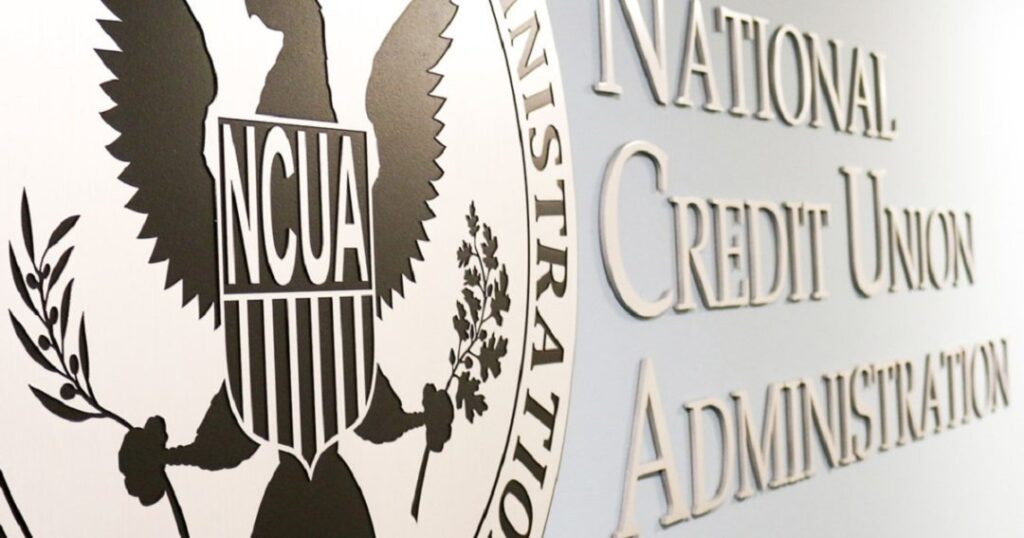*First appearing in CUInsight.com
Even as he was serving as chairman of the National Credit Union Administration (NCUA) from 2019-2021, current Board member Rodney Hood always had an eye on the road ahead for the credit union movement, zeroing in on upcoming areas of innovation through a new NCUA tech division to help our nation’s cooperatives improve financial inclusion and the economic health of their members.
Hood had the foresight, the vision, to recognize the necessity of moving digital transformation forward and the deliberate onboarding of financial technology, or fintech, into member-owner institutions. With the evolution of smartphone technology and other mobile devices in the late-2010s, Hood knew the time to move was now. What he didn’t know was that a global pandemic was just around the corner to prove him right.
Hood is quick to clarify that the creation of a new NCUA tech division, the Office of Financial Technology and Access – a cause he has championed since his chairmanship – isn’t simply about innovation, technology, and fintech. Its core focus is creating and using those headlining avenues to ultimately expand financial inclusion and access, access that will attract and draw America’s consumers and underserved into the nurturing credit union movement.
“I often talk about financial inclusion as a civil rights issue, “ Hood says. “I want to make sure whatever I’m doing is through the lens of helping vulnerable communities. We’re not just innovating to be cool, we’re innovating this for financial inclusion.” He said the plan is to be practical but deliberative when it comes to using the best tools credit unions can deploy on behalf of their members, while at the same time ensuring the best possible consumer protection, safety, and security.
Enter the era of the CUSO
For over half a century, credit union service organizations (CUSOs) have carved out their place in the cooperative ecosystem, proving to be a core benefit and enhancement to member-owner institutions everywhere.
But what is a CUSO, anyway, and how do they help credit unions?
The rigid, technical answer is pretty basic: CUSOs are corporate entities owned by either federally-chartered, federally-insured, or state-chartered credit unions, in whole or in part, that provide permitted financial products or operational functions primarily to credit unions and their members. An equally valuable description is that CUSOs can save credit unions a substantial amount of money on service costs, host innovative products and solutions for the credit union industry, and even provide recurring revenue streams for their institutions.
CUSOs’ focus lies in understanding the philosophies, needs, and practices of their partner credit unions in order to serve member interests better. An added bonus, CUSOs can also cushion the respective credit union against risk. As long as the organization is formed and managed as a separate presence and the corporate screen is maintained, the credit union’s risk is limited to the amount loaned to or financed in the respective CUSO.
There are still a healthy number of credit union executives out there who can tell you that the strategic decision to partner with a flexible, collaborative CUSO is significant when deciding who you want to handle your most valuable financial assets and product delivery platforms. Those long-time executives can probably recall when they had to depend on a correspondent bank relationship for various administrative cash and processing duties. Certain “limitations of scale” forced the credit union movement to begin constructing the earliest CUSOs to create access to major credit card companies.
Those limitations of the past in managing the delivery channels or various brands we introduce to our members no longer pose a challenge. With CUSOs, credit unions now have the scale, the investment capital, brand recognition, and regulatory flexibility to differentiate themselves in an industry that demands the distinctiveness that our member-owner philosophy and cooperative banking model can now provide.
“As I know you’ve heard me discuss before, I’ve been intensely focused on the rising financial technology industry, with the goal of encouraging constructive relationships between fintech [CUSOs] and credit unions to improve credit union operations and member services,” Hood remarked last September at the National Association of Federally Insured Credit Unions 2022 Congressional Caucus. “We want credit unions to be able to be able to take advantage of these tools for collaboration and innovation, which is important for the industry to compete in today’s marketplace.”

Underwriting the future of financial inclusion with NCUA tech division
Such member-centric digital tools for which Rodney Hood speaks are increasingly becoming the leading attractions for would-be members in this new era of online convenience, and one of the leading philosophies in the mission of improving financial inclusion.
In fact, 48 percent of consumers under 30 said they would switch to a credit union or smaller bank if it offered digital services comparable to those offered by larger institutions. At this point, credit unions have to know the movement is at an inflection point and must act immediately to begin attracting younger generations. Offering digital features and program experiences equal or superior to those implemented by larger financial institutions is central to building for the daily needs of today’s consumers.
With the wide-open accessibility to CUSOs and fintech, there is no reason credit unions cannot provide a seamless, friction-free member experience, and in doing so moving their cooperative forward into the future. Through these digital banking tools, they can now onboard third-party services to their members and further strengthen the value of the cooperative.
Functionality foundational to the member experience
Part of establishing trust and loyalty in a credit union’s member experience is credit unions’ updated functionality and features that makes members’ lives easier. And it often comes down to accessibility and speed, not to mention the advantages of privacy. What do we offer and how is it offered that separates us from the competition?
With digital small dollar loans, for example, the potential of the product’s success and thereby members’ improved access to financial inclusion lies in the speed of the relational-underwriting algorithm to offer an ultra-fast, 360-degree evaluation of a member’s financial profile without employing a conventional credit score. Within a minute, the member applicant will have been evaluated and approved, the requested small dollar loan amount deposited in their account, and ready for use for whatever unexpected emergency came their way.
As one can imagine, the fundamental privacy afforded members with digital banking is also an advantage to consider. Any one of us can picture ourselves back in the anxiety-inducing situation of strolling up to the teller window in the middle of your credit union lobby and verbally conversing out loud in front of who-knows-how-many onlookers to discuss and potentially expose sensitive financial information. Well, digital banking takes care of all that; by logging into your cooperative’s secure mobile app and privately applying for, say, a small dollar loan, the private access saves you the anxiety of speaking out loud about your finances in an unpredictably public environment.
Ultimately, when queried what type of CUSO and fintech efforts he would like to see out of so many offerings, without hesitation Rodney Hood cited greater financial inclusion.
“We still have 40 percent of American households who have difficulty obtaining $400 in emergency funds,” he said. “We still have some 50 million individuals who are what we call the ‘credit invisible,’ meaning they have no discernible credit score. I would like to see this office focus on how credit unions can better serve the financially invisible, the financially underserved.
“It goes back to the name of the office; it is the Office of Technology and Access,” Hood emphasized. “I was very intentional about creating that name because I didn’t want people to think we were going to take our eye off the ball. Just by virtue of having access in its name, I’d like for them to focus on financial inclusion.”






